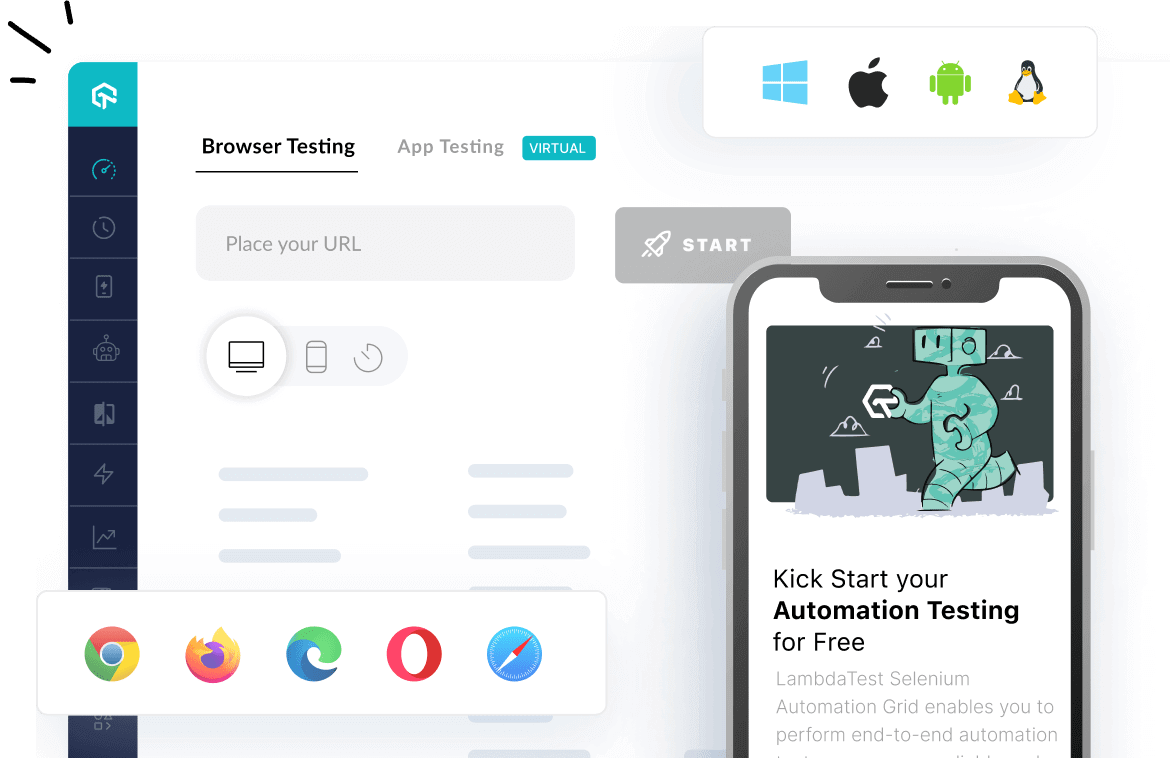How to use testHashCode method of org.easymock.tests.InvocationTest class
Best Easymock code snippet using org.easymock.tests.InvocationTest.testHashCode
Source: InvocationTest.java
...41 assertFalse(call.equals(nonEqualCall));42 }4344 @Test45 public void testHashCode() {46 try {47 call.hashCode();48 fail();49 } catch (UnsupportedOperationException expected) {50 assertEquals("hashCode() is not implemented", expected.getMessage());51 }52 }5354 @Test55 public void testShouldDisplayMocksToStringIfValidJavaIdentifier() throws SecurityException, NoSuchMethodException {56 class ToString {57 private final String name;5859 public ToString(String name) {
...testHashCode
Using AI Code Generation
1import org.easymock.tests.InvocationTest;2import org.easymock.internal.Invocation;3public class TestHashCode {4 public static void main(String[] args) {5 InvocationTest test = new InvocationTest();6 test.testHashCode();7 }8}9import org.easymock.tests.InvocationTest;10import org.easymock.internal.Invocation;11public class TestEquals {12 public static void main(String[] args) {13 InvocationTest test = new InvocationTest();14 test.testEquals();15 }16}17import org.easymock.tests.InvocationTest;18import org.easymock.internal.Invocation;19public class TestToString {20 public static void main(String[] args) {21 InvocationTest test = new InvocationTest();22 test.testToString();23 }24}25import org.easymock.tests.InvocationTest;26import org.easymock.internal.Invocation;27public class TestToString {28 public static void main(String[] args) {29 InvocationTest test = new InvocationTest();30 test.testToString();31 }32}33import org.easymock.tests.InvocationTest;34import org.easymock.internal.Invocation;35public class TestToString {36 public static void main(String[] args) {37 InvocationTest test = new InvocationTest();38 test.testToString();39 }40}41import org.easymock.tests.InvocationTest;42import org.easymock.internal.InvtestHashCode
Using AI Code Generation
1import org.easymock.tests.InvocationTest;2import org.easymock.tests.internal.MethodInvocationTest;3import org.easymock.internal.MethodInvocation;4import java.lang.reflect.Method;5public class MethodInvocationTest {6 public static void main(String[] args) throws Exception {7 testHashCode();8 testToString();9 }10 private static void testHashCode() throws Exception {11 Method method = MethodInvocationTest.class.getMethod("testHashCode");12 Object[] args = new Object[] { "abc" };13 Class<?>[] parameterTypes = new Class<?>[] { String.class };14 InvocationTest.testHashCode(method, args, parameterTypes);15 }16 private static void testToString() throws Exception {17 Method method = MethodInvocationTest.class.getMethod("testToString");18 Object[] args = new Object[] { "abc", 123 };19 Class<?>[] parameterTypes = new Class<?>[] { String.class, int.class };20 MethodInvocationTest.testToString(method, args, parameterTypes);21 }22}23import org.easymock.tests.InvocationTest;24import org.easymock.internal.MethodInvocation;25import java.lang.reflect.Method;26public class MethodInvocationTest {27 public static void main(String[] args) throws Exception {28 testHashCode();29 }30 private static void testHashCode() throws Exception {31 Method method = MethodInvocationTest.class.getMethod("testHashCode");32 Object[] args = new Object[] { "abc" };33 Class<?>[] parameterTypes = new Class<?>[] { String.class };34 InvocationTest.testHashCode(method, args, parameterTypes);35 }36}37public static void testHashCode(Method method, Object[] args,38 Class<?>[] parameterTypes) {39 MethodInvocation invocation = new MethodInvocation(method, args,40 parameterTypes);41 int expected = invocation.hashCode();42 int actual = invocation.hashCode();43 if (expected != actual) {44 System.out.println("MethodInvocation hashCode test failed");45 } else {Blogs
Check out the latest blogs from LambdaTest on this topic:
So you are at the beginning of 2020 and probably have committed a new year resolution as a tester to take a leap from Manual Testing To Automation . However, to automate your test scripts you need to get your hands dirty on a programming language and that is where you are stuck! Or you are already proficient in automation testing through a single programming language and are thinking about venturing into new programming languages for automation testing, along with their respective frameworks. You are bound to be confused about picking your next milestone. After all, there are numerous programming languages to choose from.
I was once asked at a testing summit, “How do you manage a QA team using scrum?” After some consideration, I realized it would make a good article, so here I am. Understand that the idea behind developing software in a scrum environment is for development teams to self-organize.
Hey everyone! We hope you had a great Hacktober. At LambdaTest, we thrive to bring you the best with each update. Our engineering and tech teams work at lightning speed to deliver you a seamless testing experience.
Developed in 2004 by Thoughtworks for internal usage, Selenium is a widely used tool for automated testing of web applications. Initially, Selenium IDE(Integrated Development Environment) was being used by multiple organizations and testers worldwide, benefits of automation testing with Selenium saved a lot of time and effort. The major downside of automation testing with Selenium IDE was that it would only work with Firefox. To resolve the issue, Selenium RC(Remote Control) was used which enabled Selenium to support automated cross browser testing.
Automation Testing Tutorials
Learn to execute automation testing from scratch with LambdaTest Learning Hub. Right from setting up the prerequisites to run your first automation test, to following best practices and diving deeper into advanced test scenarios. LambdaTest Learning Hubs compile a list of step-by-step guides to help you be proficient with different test automation frameworks i.e. Selenium, Cypress, TestNG etc.
LambdaTest Learning Hubs:
- JUnit Tutorial
- TestNG Tutorial
- Webdriver Tutorial
- WebDriverIO Tutorial
- Protractor Tutorial
- Selenium 4 Tutorial
- Jenkins Tutorial
- NUnit Tutorial
- Jest Tutorial
- Playwright Tutorial
- Cypress Tutorial
- PyTest Tutorial
YouTube
You could also refer to video tutorials over LambdaTest YouTube channel to get step by step demonstration from industry experts.
Most used method in InvocationTest
Try LambdaTest Now !!
Get 100 minutes of automation test minutes FREE!!

